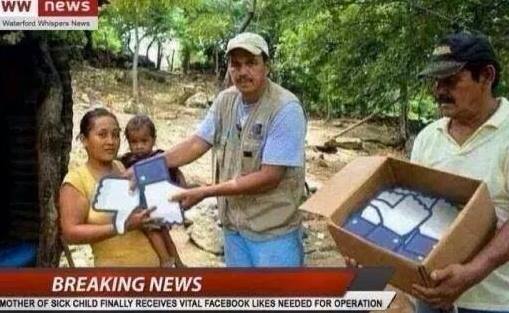If Facebook isn't the future of social marketing, what is?
There was a short but intriguing article in the Ad Nauseum column in Private Eye last week. It suggested that some unnamed ad agencies were trying to bury a Forrester report that demonstrated that both Facebook and Twitter were pretty poor at providing an engaging brand experience.
The report highlighted research that indicated that years of advice to engage with ‘friends’ and ‘followers’ had been “wasting significant financial, technological, and human resources”.
Customised Facebook advertising is relatively useful for recruiting donors and volunteers and we’ve seen how online events like the #icebucketchallenge and #nomakeupselfie have exploded across the globe powered by social media. But when it comes to engagement, I’ve always thought the big two social media tools have been a couple of blunt instruments that simply can’t drive the levels of loyalty that charities are looking for.
So, I took a hefty whack on the credit card and downloaded the report to see what Forrester had to say about social marketing.
In short, their research shows that Facebook and Twitter aren’t the centre of the social universe. The average post reaches about 2% of fans and followers. More worryingly, less than 0.1% of them will actually interact with a post. And if someone wants to keep in touch with a brand, they prefer to do it via an organisation's website rather than Facebook or Twitter.
It backs up what we've found online at Bluefrog. For example, we’ve helped recruit over 17,000 supporters for lendwithcare.org but only 4% have been driven by social media shares. Compare that to the 15% that signed up after a direct recommendation from a friend and 15% who signed up after being bought a gift voucher and it starts to put the power of Facebook and Twitter into context.
So what of the future for social marketing?
Though Forrester predict that Facebook is likely to become "nothing but a repository for display adverts", they don't think social media is dead. Far from it. They see the future as being based on smaller networks, branded communities and branded social hubs.
It's good advice. Though not all donors want a high level of engagement, a significant percentage do and branded communities are ideal for them. For World Animal Protection's, Animal Protector site we've found that the most engaged supporters will visit 3 or 4 times a week, every week.
Even though updates happen only once every two or three weeks, donors want to find out what other supporters think and do in response to the project updates. And that keeps them coming back. World Animal Protection's content is only part of what donors value. The chance to engage with other likeminded supporters (who are not Facebook friends) offers a sense of community that Facebook or Twitter can't hope to replicate.
Facebook and Twitter are not designed to be vehicles for charities to engage with their supporters. They might help us start a campaign or get a message out, but trying to build a relationship with donors via a system where even a large charity is going to be a tiny cog in a huge wheel is not going to be sustainable. Even if there is now some photographic proof that Likes are finally changing people's lives.
Tags In
The Essentials

Crack the Code to Regular Giving: Insights, Strategies, and a Special Giveaway!

‘Tis Halloween. Keep to the light and beware the Four Fundraisers of the Apocalypse!

Why do people give? The Donor Participation Project with Louis Diez.

A guide to fundraising on the back of a postcard

What does the latest research tell us about the state of fundraising?






